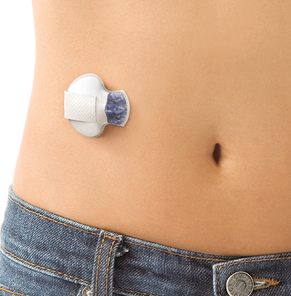
CGM (Continuous Glucose Monitoring) – Are They All the Same and Do They Really Help Diabetes Management?
With the recent announcement that continuous and flash monitoring equipment will be subsidized for all individuals diagnosed with type 1 diabetes from the 1st July 2022, management options for those who choose to use them will change considerably.
On face value these systems look to do much the same thing. They upload a glucose level approximately every five minutes to a receiver. This receiver can be in the form of an android or I-Phone, an insulin pump or a reader supplied by the company that make the monitoring system. Now with the technology being so accurate there is no need to perform finger pricking unless the level on the display does not reflect an individual’s symptoms. The best way to describe this to someone who has never experienced glucose monitoring via finger pricking and via CGM or “flash” monitoring is to explain the difference between following a set of directions via a road map or via a GPS. Vastly different.
Both CGM and “flash” monitoring will give an individual a glucose reading in real time as well as predictive information about where that glucose level is expected to head, and display this in the form of trend arrows. This information is invaluable when making decisions such as insulin doses, exercise, hypoglycaemia treatment and even how much food to eat at any time. There are also small but important differences between the systems currently on the Australian market that may help individuals with their journey with diabetes.
“Flash” monitoring, a term commonly used to describe the Freestyle Libre 2 system, allows the wearer to scan their phone or reader over the sensor (commonly inserted in the back of the upper arm). This gives a glucose result in less than 1 second by “pulling” the data from the sensor. An optional low glucose and high glucose alert can also be set which will alarm once a person’s glucose levels have reached these levels. These alarms and glucose data can also be shared with loved ones and health care professionals. It does however require the person with diabetes to actively scan the reader or phone to obtain the glucose levels except when there is a reading that triggers one of the alerts set by the wearer.
There are two companies currently supplying the Australian market with continuous glucose monitoring equipment. Medtronic and Dexcom (supplied by Australasian Medical and Scientific LTD). Both take a glucose reading approximately every 5 minutes and “push” the data to a phone, insulin pump or reader. This means that the person with diabetes does not have to actively scan the collecting device across the sensor to get a reading. It also means more alarms can be set if needed (this has its advantages and disadvantages). Such alarms as trending towards a low blood glucose level so that a hypoglycaemic event can be prevented. Some or all these alarms and glucose data can also be shared with loved ones and health care professionals if this is what is chosen.
For further information about “flash” and continuous glucose monitoring please do not hesitate to book a time with our credentialed diabetes educator Kirrily Chambers, here.






